Swimming pool filter cleaners are essential tools for maintaining the efficiency of your pool’s filtration system. A clean filter ensures clean, sparkling pool water and protects your pool equipment from dirt and debris.
Types of Swimming Pool Filter Cleaners

When maintaining a swimming pool, choosing the right filter cleaner is crucial for ensuring water clarity and hygiene. Here’s a detailed look at the types of swimming pool filter cleaners, focusing on cartridge, sand, and diatomaceous earth (DE) filters.
Understanding Cartridge Filter Cleaners
Cartridge filters use pleated polyester fabric to trap debris and particles. Cleaning these filters involves several steps to ensure they remain effective:
Basic Cleaning: Remove the cartridge from the filter housing and use a garden hose with a spray nozzle to wash off debris. Hold the nozzle at a 45-degree angle to clean between the pleats thoroughly.
Deep Cleaning: For more thorough cleaning, soak the cartridge in a filter cleaner solution. This can be a commercial filter cleaner or a mixture of trisodium phosphate (TSP) and water. Soak the cartridge for at least an hour or overnight for the best results.
Rinsing and Drying: After soaking, rinse the cartridge thoroughly to remove all cleaning solution and debris. Allow the cartridge to dry completely before reinserting it into the filter housing.
Regular cleaning is recommended when the filter pressure gauge reads 8–10 PSI above the normal operating level or every 3–6 months, depending on pool usage.
Exploring Sand Filter Cleaners
Sand filters use specially graded sand to trap particles as water passes through. The cleaning process, known as backwashing, involves reversing the water flow to remove trapped debris.
Backwashing: Turn off the pool pump, set the multiport valve to the backwash position, and turn the pump back on. Run the backwash until the water in the sight glass is clear, usually 2–3 minutes.
Rinsing: After backwashing, set the valve to the rinse position and run the pump for 1-2 minutes to resettle the sand.
Regular Maintenance: Backwash the filter when the pressure gauge reads 8–10 PSI above the clean starting pressure. Sand typically needs to be replaced every 5–7 years, depending on usage.
Sand filters are effective for removing particles down to 20–40 microns, making them suitable for most residential pools.
Comparing Diatomaceous Earth (DE) Filter Cleaners
DE filters use a fine powder made from fossilized diatoms to trap particles as small as 2–5 microns, providing superior water clarity.
Pre-Coating: Before use, DE powder is mixed with water to form a slurry and added to the filter. The powder coats the filter grids, creating a layer that traps debris.
Backwashing and Re-Coating: Similar to sand filters, DE filters require backwashing to remove trapped debris. After backwashing, new DE powder must be added to re-coat the grids.
Manual Cleaning: Periodically, the filter grids need to be removed and cleaned manually. This involves soaking the grids in a filter cleaner solution to remove oils and debris, then rinsing thoroughly before reassembly.
DE filters offer the highest level of filtration, capturing the smallest particles and reducing the need for chemical treatments. However, they require more maintenance and handling of DE powder, which can be messy
Advantages of Using Filter Cleaners

Improves Water Clarity
Clean filters are essential for maintaining clear and inviting pool water. When filters are free from debris and contaminants, they can effectively trap particles, preventing them from circulating back into the pool. This process ensures that the water remains clear and free from visible impurities.
Mechanism: Filters remove dirt, debris, and microscopic particles from the water. Over time, these particles accumulate and can clog the filter, reducing its efficiency. Regular cleaning removes these obstructions, allowing the filter to operate at its full capacity.
Impact on Water Quality: Clean filters prevent the buildup of algae and bacteria, which can cause cloudy water and health hazards. By maintaining a clean filter, you ensure that the water remains clear and safe for swimming.
Enhances Pool Performance
Clean filters significantly improve the overall performance of the pool’s circulation and filtration systems. Properly maintained filters ensure that water flows smoothly through the system, enhancing the efficiency of both the pump and the filter.
Circulation: Clean filters promote better water circulation by allowing water to pass through the filtration system without obstruction. This helps in evenly distributing chemicals and maintaining balanced water chemistry.
Filtration Efficiency: When filters are clean, they can more effectively remove contaminants from the water. This reduces the need for additional chemical treatments and helps maintain a healthier swimming environment.
Extends the Lifespan of Filters
Regular cleaning of pool filters not only improves their performance but also extends their lifespan. By preventing the buildup of debris and contaminants, you reduce the wear and tear on the filter components, ensuring they last longer.
Preventing Damage: Accumulated debris can cause filters to work harder, leading to increased pressure and potential damage to the filter media and other components. Regular cleaning helps prevent this strain, reducing the risk of mechanical failures.
Cost Savings: By extending the lifespan of your filters, you save on replacement costs and reduce the frequency of repairs. This makes regular filter cleaning a cost-effective maintenance practice.
In my experience, maintaining clean filters has made a noticeable difference in the clarity of my pool water and the efficiency of the filtration system. Regular cleaning has also helped avoid costly repairs and replacements, making it a worthwhile investment in the long run.
Cleaning Frequency and Indicators
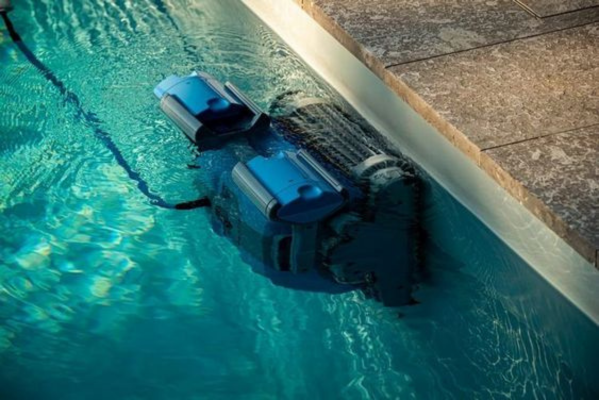
How Often Should You Clean Your Swimming Pool Filter?
The frequency of cleaning your swimming pool filter depends on several factors, including the type of filter, pool usage, and environmental conditions. Here are some general guidelines:
Cartridge Filters: Typically, cartridge filters should be cleaned every three to six months. However, this can vary based on the size of the filter and the amount of debris in the pool. For instance, larger cartridge filters (around 460 square feet) may need cleaning every three to four months, while smaller ones (100 square feet) might require more frequent cleaning, such as every couple of weeks.
Sand Filters: Sand filters generally need to be backwashed every one to four weeks, depending on the pool’s usage and the amount of debris. Overbackwashing can lead to algae problems due to the loss of important chemicals.
Diatomaceous Earth (DE) Filters: DE filters should be backwashed every one to three months or when the pressure gauge indicates a rise of 5–10 PSI above the normal operating level. DE filters also require periodic manual cleaning and re-coating with DE powder.
Factors Affecting the Frequency of Cleaning
Several variables can influence how often you need to clean your pool filter:
Pool Location: Pools located near trees or in areas with high debris levels will require more frequent filter cleaning. Environmental factors such as wind and rain can also increase the amount of debris entering the pool.
Pool Usage: The more frequently the pool is used, the more contaminants (like body oils, sunscreen, and dirt) will enter the water, necessitating more frequent filter cleaning. High bathing loads can significantly impact the filter’s efficiency.
Type of Filter: Different filters have varying capacities and cleaning requirements. For example, cartridge filters need less frequent cleaning compared to sand filters, which require regular backwashing.
Signs That Indicate It’s Time for Filter Cleaning
Identifying when your pool filter needs cleaning can prevent water quality issues and maintain optimal pool performance. Here are some signs to look out for:
Decreased Water Flow: A noticeable reduction in water flow from the pool jets can indicate a clogged filter. Higher pressure readings on the filter gauge are frequently present in conjunction with this.
Cloudy or Dirty Water: If the pool water appears cloudy or dirty despite proper chemical balance, it is likely that the filter is not functioning efficiently and needs cleaning.
Increased Pressure: A rise of 8–10 PSI above the normal operating pressure on the filter gauge is a clear indicator that the filter needs to be cleaned. This applies to all types of filters, including cartridge, sand, and DE filters.
Frequent Backwashing: If you find yourself needing to backwash your sand or DE filter more frequently than usual, it may be a sign that the filter media is clogged and requires thorough cleaning or replacement.
By adhering to these guidelines and monitoring the signs, you can ensure your pool filter operates efficiently, maintaining clean and clear pool water. Regular maintenance not only improves water quality but also extends the lifespan of your pool filter.
Cleaning Process
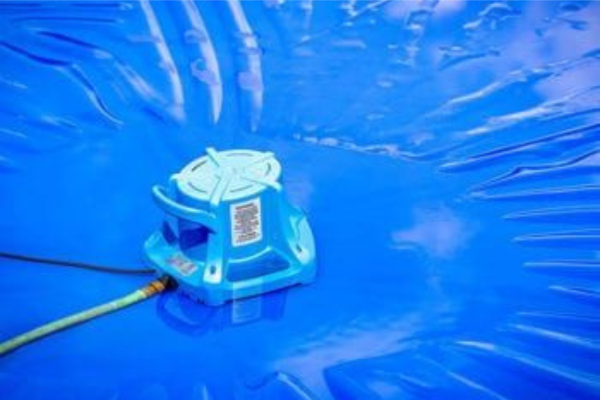
Steps Involved in Cleaning a Swimming Pool Filter
Sand Filters
- Backwash the Filter: Turn off the pool pump and set the multiport valve to the backwash position. Run the pump for 3–5 minutes until the water runs clear.
- Turn Off the Pump: Ensure the pump is off and close any valves in front of the pump.
- Remove the Pump Lid and Basket: Take off the pump lid and remove the strainer basket, ensuring it is free of debris.
- Add Filter Cleaner: Pour the filter cleaner into the pump pot and follow with a bucket of clean water to ensure no residue is left.
- Run the Pump Briefly: Turn the pump on for about 10–15 seconds to circulate the cleaner through the filter, then turn it off.
- Soak the filter: Let the filter soak in the cleaner for 8–12 hours.
- Backwash Again: After soaking, backwash the filter for another 5 minutes to remove any remaining cleaner.
- Rinse the Filter: Set the valve to the rinse position and run the pump for 30 seconds.
- Return to Normal Operation: Turn off the pump, set the valve back to the filter position, and turn the pump back on.
Cartridge Filters
- Turn Off the Pump: Ensure the pool pump is off and open the air relief valve to release pressure.
- Remove the Cartridge: Open the filter housing and carefully remove the cartridge.
- Rinse the Cartridge: Use a garden hose with a spray nozzle to rinse off loose debris, directing the water between the pleats.
- Soak the Cartridge: If the cartridge is still dirty, soak it overnight in a filter cleaner solution or a mixture of water and muriatic acid (1 part acid to 20 parts water).
- Inspect and lubricate: Check the O-ring for damage and apply lubricant if necessary.
- Reassemble the Filter: Place the clean cartridge back into the filter housing, secure the lid, and turn the pump back on.
Diatomaceous Earth (DE) Filters
- Backwash the Filter: Set the multiport valve to the backwash position and run the pump until the water runs clear
- Turn Off the Pump: Turn off the pump and open the air relief valve to release pressure
- Disassemble the filter. Remove the filter tank lid and take out the manifold and grids
- Rinse the Grids: Use a garden hose to rinse off the DE powder from the grids
- Soak the Grids: For a deeper clean, soak the grids in a solution of TSP (trisodium phosphate) and hfilter.ter or a DE filter cleaner.
- Reassemble the Filter: Place the cleaned grids back into the filter tank, lubricate the O-ring, and secure the lid
- Add New DE Powder: Mix the required amount of DE powder with water to form a slurry and add it to the skimmer with the pump running
Proper Application of Swimming Pool Filter Cleaners
Sand Filters
- Filter Cleaner Application: Pour the filter cleaner directly into the pump pot and follow with clean water to ensure thorough distribution. Let the cleaner soak for 8–12 hours before backwashing.
- Backwashing is essential to remove the cleaner and any trapped debris. To make sure there is no cleaner residue left, thoroughly backwash the appliance and then run a cycle of rinses.
Cartridge Filters
- Rinsing: Use a garden hose with a spray nozzle to clean between the pleats. Avoid using high-pressure washers, as they can damage the filter material.
- Soaking: For stubborn dirt and oils, soak the cartridge in a filter cleaner solution or a mixture of water and muriatic acid. Ensure the cartridge is fully submerged and soak overnight for best results.
- Inspection and Lubrication: Check the O-ring for damage and apply a suitable lubricant to prevent leaks and extend its lifespan.
DE Filters
- Backwashing: Regular backwashing is crucial to remove accumulated DE powder and debris. Follow with a rinse cycle to clear any remaining particles
- Chemical Soaking: For deep cleaning, soak the grids in a TSP solution or a specialized DE filter cleaner to remove oils and mineral deposits. This should be done periodically to maintain filter efficiency.
- Recharging with DE Powder: After cleaning, always add fresh DE powder to the filter. Mix the powder with water to form a slurry and add it to the skimmer with the pump running to ensure even distribution over the grids
Choosing and Using Filter Cleaners

Choosing the Right Swimming Pool Filter Cleaner
When selecting a swimming pool filter cleaner, consider the following factors:
Pool Size: Choose a cleaner that is suitable for the size of your pool. Larger pools may require more concentrated cleaners or larger quantities for effective cleaning.
Filter Type: Different types of filters (e.g., sand, cartridge, D.E.) may require specific cleaners tailored to their materials and construction. Ensure the cleaner you choose is compatible with your filter type to avoid damage or inefficiency.
Compatibility: Check the compatibility of the cleaner with your pool’s materials (e.g., vinyl, fiberglass, concrete) and other pool chemicals. Some cleaners may be harsh or abrasive and could damage certain pool surfaces or equipment.
Common Ingredients in Pool Filter Cleaners
Pool filter cleaners may contain various ingredients designed to effectively remove dirt, oils, and debris from the filter. Common ingredients include:
Alkaline Solutions: Alkaline-based cleaners help dissolve oils, greases, and organic matter trapped in the filter media. They are effective at breaking down stubborn residue for thorough cleaning.
Enzymes: Enzyme-based cleaners work by breaking down organic contaminants, such as oils, lotions, and sunscreen, into smaller particles that are easier to remove from the filter. They are often used as part of routine maintenance to prevent buildup and clogging.
Oxidizing Agents: Oxidizing agents, such as chlorine or bromine-based compounds, help sanitize the filter and remove bacteria, algae, and other microorganisms. They can also break down organic matter and improve clarity.
Best Practices for Using Filter Cleaners
To ensure the safe and effective use of pool filter cleaners, follow these best practices:
Read the Instructions: Always read and follow the manufacturer’s instructions and safety guidelines provided with the cleaner. This includes dosage recommendations, application methods, and safety precautions.
Wear Protective Gear: When handling pool filter cleaners, wear appropriate protective gear, such as gloves and eye protection, to avoid skin irritation or contact with harsh chemicals.
Use Proper Dilution: Dilute concentrated cleaners according to the manufacturer’s instructions to avoid overuse or damage to the filter media. Mixing ratios may vary depending on the cleaner’s concentration and the severity of the cleaning task.
Follow Application Instructions: Apply the cleaner to the filter as directed, ensuring thorough coverage of the filter media. Allow the cleaner to penetrate and soak for the recommended duration before rinsing or backwashing.
Rinse Thoroughly: After cleaning, rinse the filter thoroughly with clean water to remove any remaining residue or cleaner. This helps prevent chemical buildup and ensures the filter is ready for use.
Proper Storage: Store pool filter cleaners in a cool, dry place away from direct sunlight and moisture. Keep containers tightly sealed to prevent evaporation or contamination. Follow any specific storage instructions provided by the manufacturer.
Eco-Friendly Cleaning Solutions
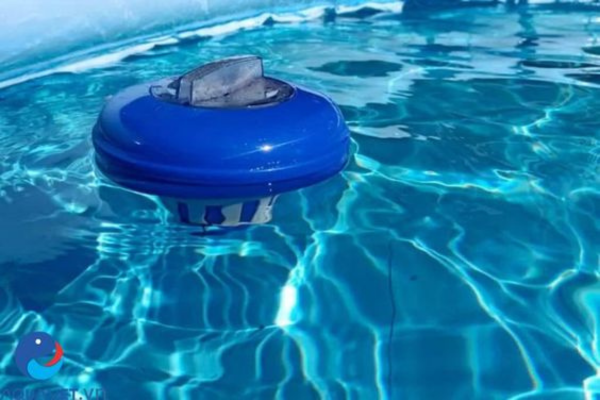
Eco-Friendly Pool Filter Cleaner Options
There are several eco-friendly options for pool filter cleaners that are effective at removing dirt and debris without harmful chemicals. Some natural alternatives include:
Enzyme-Based Cleaners: Enzyme-based cleaners contain natural enzymes that break down organic contaminants, such as oils, lotions, and algae, without the need for harsh chemicals. These cleaners are biodegradable and environmentally friendly.
Citrus-Based Cleaners: Citrus-based cleaners utilize the natural cleaning properties of citrus extracts, such as lemon or orange oil, to dissolve dirt and grime from pool filters. They are non-toxic and safe for the environment.
Vinegar Solutions: White vinegar is an effective and eco-friendly cleaner that can be used to remove mineral deposits and scale buildup from pool filters. Dilute vinegar with water and soak the filter in the solution to dissolve stubborn residue.
Baking Soda Scrubs: Baking soda is a gentle abrasive that can help scrub away dirt and stains from pool filters. Create a paste using baking soda and water, apply it to the filter, and scrub with a brush before rinsing thoroughly.
DIY Swimming Pool Filter Cleaner Solutions
You can make homemade pool filter cleaners using common household ingredients. Here are some DIY recipes:
Vinegar Soak: Mix equal parts white vinegar and water in a bucket or container. Submerge the pool filter in the solution and allow it to soak for several hours or overnight. Rinse the filter thoroughly with clean water before reinstalling it.
Baking Soda Scrub: Create a paste using baking soda and water. Apply the paste to the filter and scrub with a brush to remove dirt and stains. Rinse the filter thoroughly with water before reattaching it.
Citrus Soak: Cut citrus fruits, such as lemons or oranges, into slices and place them in a container of water. Submerge the pool filter in the citrus-infused water and let it soak for several hours. The natural acids in the citrus fruits help break down dirt and grime.
Minimizing Environmental Impact
To minimize the environmental impact of pool filter cleaners, consider the following tips:
Choose Biodegradable Formulas: Opt for pool filter cleaners that are biodegradable and environmentally friendly. Look for products labeled as eco-friendly or green alternatives.
Use Natural Alternatives: Whenever possible, use natural alternatives such as vinegar, baking soda, or citrus-based cleaners to clean your pool filter. These options are safer for the environment and pose less risk of chemical runoff.
Dispose of Waste Properly: Dispose of used filter cleaner solutions according to local regulations. Avoid dumping chemicals down storm drains or into natural waterways, as they can harm aquatic ecosystems.
Reduce chemical usage: Regularly maintain your pool and practice proper water chemistry balance to reduce the need for heavy-duty cleaners. By keeping your pool clean and balanced, you can minimize the use of harsh chemicals and the environmental impact associated with them.
Maintenance Tips
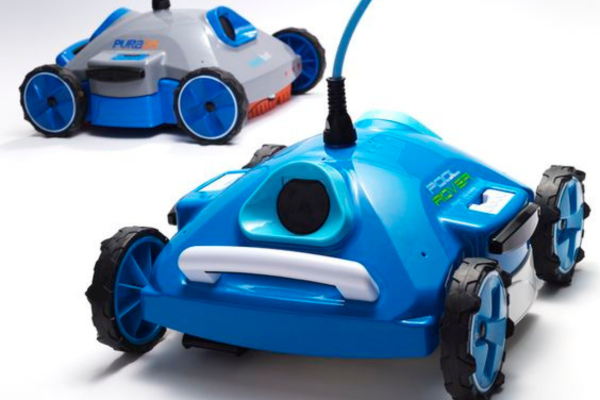
Maintenance Tips for Swimming Pool Filters
Regular maintenance is essential for ensuring the optimal performance and longevity of swimming pool filters.
Check and Clean Regularly: Establish a routine schedule for checking and cleaning your pool filter based on manufacturer recommendations. This may involve backwashing sand filters, rinsing cartridge filters, or refreshing D.E. filter grids. Regular cleaning prevents clogging and maintains efficient filtration.
Monitor Pressure Gauge: Keep an eye on the pressure gauge on your filter system and note any significant increases in pressure. A sudden rise in pressure may indicate a clogged filter that requires cleaning or backwashing. Monitor pressure levels and clean the filter as needed to maintain optimal flow rates.
Inspect Filter Media: Periodically inspect the filter media (sand, cartridges, or D.E. powder) for signs of wear, damage, or degradation. Replace worn or damaged media promptly to prevent reduced filtration efficiency and potential damage to the filter system.
Clean Filter Baskets: Clean out skimmer and pump baskets regularly to remove leaves, debris, and other contaminants that can clog the filter and impede water flow. Clogged baskets restrict water flow and strain the filter, reducing its effectiveness.
Maintain Proper Water Chemistry: Balance your pool’s water chemistry by regularly testing and adjusting pH, chlorine levels, alkalinity, and calcium hardness. Proper water chemistry reduces the workload on the filter and extends its lifespan.
Winterize Properly: If you live in a region with cold winters, winterize your pool and filter system to protect them from freezing temperatures. Follow manufacturer guidelines for draining water, protecting equipment, and adding winterizing chemicals to prevent damage.
Schedule Professional Inspections: Arrange for annual inspections and maintenance by a qualified pool technician or service professional. A professional can identify and address any issues with your filter system, ensuring it operates efficiently and reliably.
Inspecting O-Rings and Seals
O-rings and seals play a crucial role in maintaining a watertight seal between filter components, preventing leaks, and ensuring proper filtration.
Prevent leaks: O-rings and seals create a tight seal between filter components, preventing water from leaking out of the filter system. Inspecting these components ensures they are in good condition and free from damage or wear that could lead to leaks.
Ensure Proper Functionality: Damaged or deteriorated O-rings and seals can compromise the functionality of the filter system, allowing air or debris to enter the system and affecting filtration performance. Regular inspection helps identify and address issues before they escalate.
Extend the Lifespan of Equipment: Proper maintenance of O-rings and seals extends the lifespan of filter equipment by preventing premature wear and damage. By replacing worn or damaged seals promptly, you can avoid costly repairs or replacements down the line.
Expert Resources and Advice

The Association of Pool & Spa Professionals (APSP): The APSP is a leading trade association representing the pool and spa industry. Their website offers a wealth of resources, including best practices, technical manuals, and educational materials on pool maintenance, including information on filter cleaners.
National Swimming Pool Foundation (NSPF): The NSPF is a nonprofit organization dedicated to improving pool and spa safety, health, and sustainability. Their website provides educational courses, certification programs, and research-based resources for pool professionals and enthusiasts.
Pool & Spa News: Pool & Spa News is a reputable publication covering news, trends, and insights in the pool and spa industry. Their website features articles, guides, and product reviews related to pool maintenance, including recommendations for filter cleaners.
Manufacturer Websites: Many pool equipment manufacturers, such as Hayward, Pentair, and Zodiac, offer comprehensive resources and support materials on their websites. These resources may include product manuals, maintenance guides, and troubleshooting tips specific to their pool filter systems and cleaners.
Local Pool Service Companies: Reach out to local pool service companies or professionals in your area for personalized advice and recommendations. They often have firsthand experience with different filter cleaners and can provide insights based on their expertise.
Online Forums and Communities: Participate in online forums and communities dedicated to pool maintenance, such as Trouble Free Pool (TFP) or PoolForum. These platforms allow pool owners and professionals to share tips, ask questions, and exchange advice on filter cleaners and other maintenance topics.
Pool Maintenance Courses and Workshops: Consider enrolling in pool maintenance courses or workshops offered by industry organizations, community colleges, or vocational schools. These educational programs provide hands-on training and expert guidance on pool maintenance practices, including filter cleaning.
Conclusion
Regular filter maintenance and proper use of filter cleaners are essential for ensuring clean and healthy pool water and prolonging the lifespan of your pool filter system.
Optimal Filtration Performance: Regular maintenance, including cleaning or replacing filter media, prevents clogging and ensures efficient filtration. Clean filters trap dirt, debris, and contaminants, keeping your pool water crystal clear and safe for swimming.
Prevention of Equipment Damage: Proper maintenance of pool filters helps prevent damage to filter components, such as pumps, motors, and valves, by reducing strain and improving overall system efficiency. This extends the lifespan of your equipment and minimizes the need for costly repairs or replacements.
Enhanced Water Quality: Clean filters remove particles and impurities from the water, improving water quality and clarity. Regular maintenance ensures that your pool water remains inviting and enjoyable for swimming while also reducing the risk of algae growth and waterborne illnesses.
Energy Efficiency: A well-maintained filter system operates more efficiently, reducing energy consumption and lowering utility costs. By keeping filters clean and properly maintained, you can maximize energy efficiency and minimize environmental impacts.
Promotion of Safety and Enjoyment: Clean and well-maintained pool filters contribute to a safer and more enjoyable swimming experience for you and your guests. Clear water allows for better visibility and monitoring of pool users, while also reducing the risk of accidents or injuries.
Choosing environmentally friendly options for pool filter cleaners whenever possible further enhances the benefits of regular maintenance.
Reduced Environmental Impact: Eco-friendly filter cleaners minimize chemical runoff and contamination of surrounding ecosystems, helping to preserve water quality and protect wildlife.
Healthier Pool Environment: Natural and biodegradable cleaners are safer for swimmers and reduce exposure to harmful chemicals, promoting a healthier pool environment for everyone.
Sustainable Practices: By choosing environmentally friendly options, you contribute to sustainable pool maintenance practices and demonstrate a commitment to environmental stewardship.
Regular filter maintenance and the use of environmentally friendly filter cleaners are essential practices for maintaining a clean, safe, and sustainable swimming pool. By incorporating these practices into your pool maintenance routine, you can enjoy a beautiful and healthy pool while minimizing your environmental footprint.

Meet David Thomas, a seasoned professional with nearly 8 years of experience specializing in inspecting and resolving issues related to swimming pools. With his expertise and meticulous attention to detail, David ensures the safety and functionality of pools, making them a refreshing oasis for all to enjoy. Whether it’s troubleshooting equipment or maintaining water quality, David’s proficiency guarantees top-notch solutions tailored to meet every pool owner’s needs.
